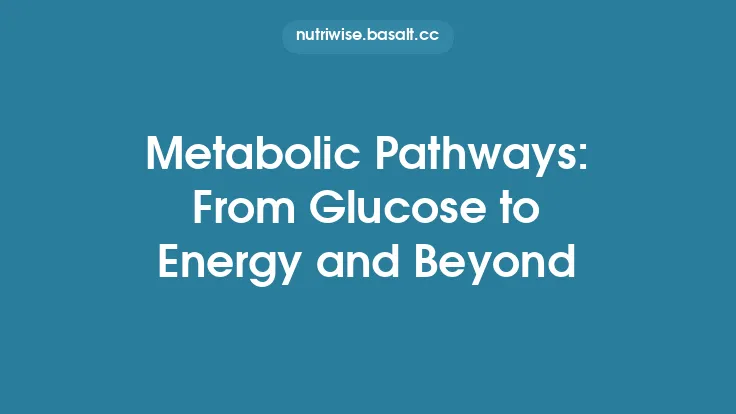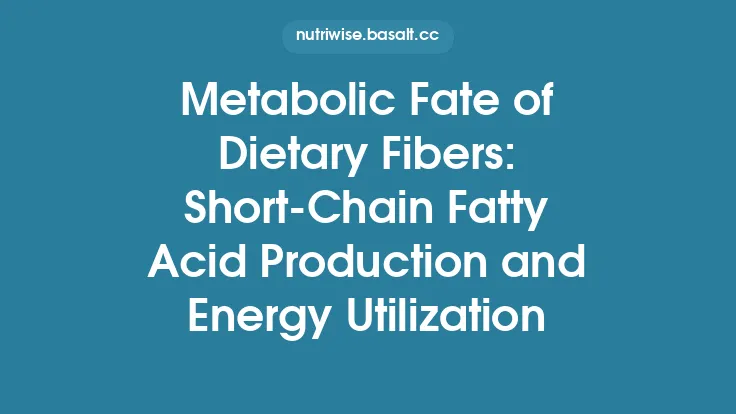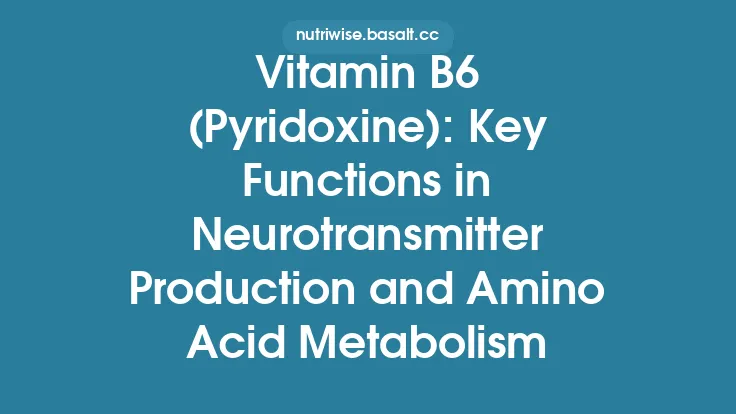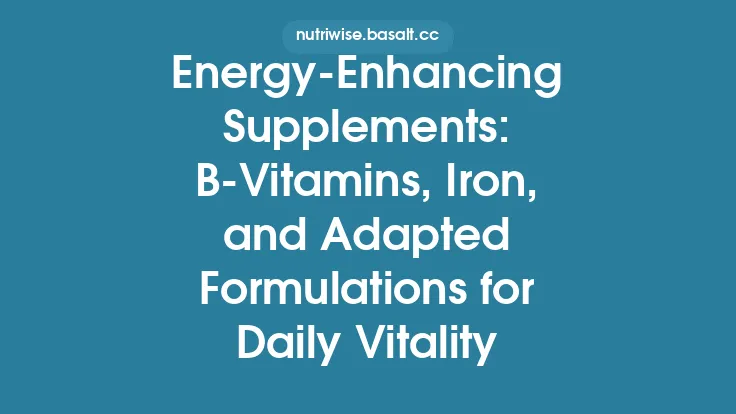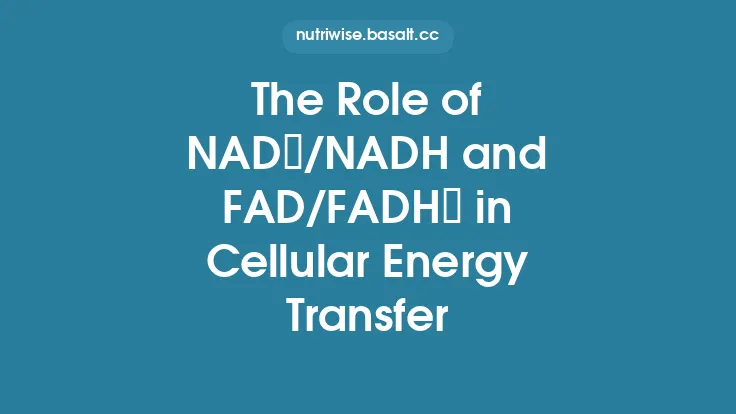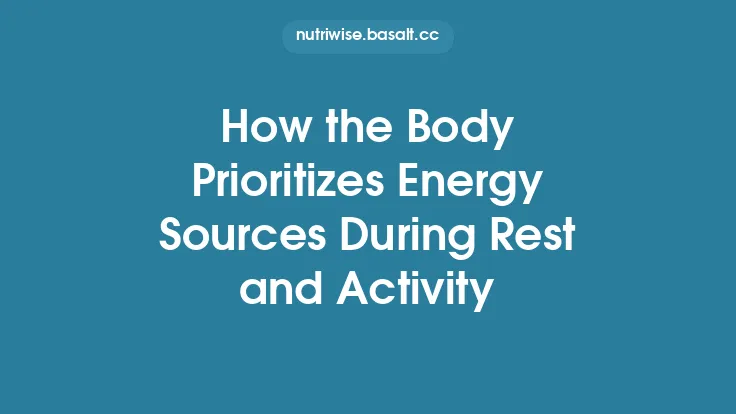Dietary protein is the primary source of the body’s amino acids, which serve not only as the building blocks of proteins but also as versatile substrates that can be converted into energy and a variety of metabolic intermediates. After ingestion, proteins are broken down into their constituent amino acids, absorbed into the bloodstream, and then either incorporated into new proteins or funneled through a series of catabolic reactions that ultimately intersect with central metabolic pathways. Understanding how amino acids are de‑constructed, how their carbon skeletons are repurposed, and how the accompanying nitrogen is safely eliminated provides a comprehensive picture of protein’s contribution to whole‑body energy balance and metabolic homeostasis.
Overview of Protein Digestion and Amino Acid Absorption
The digestive cascade begins in the stomach, where pepsin cleaves long polypeptide chains into shorter peptides under acidic conditions. In the duodenum, pancreatic proteases—trypsin, chymotrypsin, elastase, and carboxypeptidases—further hydrolyze these peptides into di‑ and tri‑peptides. Brush‑border peptidases on the enterocyte surface (aminopeptidases, dipeptidases, and tripeptidases) complete the process, releasing free amino acids that are then transported across the apical membrane via sodium‑dependent (e.g., B⁰AT1) and sodium‑independent (e.g., LAT1) transporters.
Once inside the enterocyte, amino acids may be:
- Directly released into the portal circulation via the basolateral amino acid transporters, maintaining a plasma amino‑acid pool that reflects recent dietary intake.
- Metabolized locally for the synthesis of enterocyte proteins or for the production of bioactive compounds such as serotonin (from tryptophan) and nitric oxide (from arginine).
The liver, receiving the portal blood, acts as the first metabolic checkpoint, extracting a substantial fraction of the amino‑acid load for both protein synthesis and catabolism.
Amino Acid Classification: Glucogenic, Ketogenic, and Mixed
Amino acids are categorized based on the fate of their carbon skeletons after deamination:
| Category | Representative Amino Acids | Primary Metabolic End‑Products |
|---|---|---|
| Glucogenic | Alanine, Arginine, Asparagine, Aspartate, Cysteine, Glutamate, Glutamine, Glycine, Histidine, Methionine, Proline, Serine, Valine | Pyruvate, Oxaloacetate, α‑Ketoglutarate, Succinyl‑CoA (all can be converted to glucose via gluconeogenesis) |
| Ketogenic | Leucine, Lysine | Acetyl‑CoA, Acetoacetate (precursors for ketone bodies) |
| Mixed (Both Glucogenic & Ketogenic) | Isoleucine, Phenylalanine, Threonine, Tryptophan, Tyrosine | Yield both gluconeogenic and ketogenic intermediates |
This classification is crucial because it determines whether an amino acid can contribute to glucose production, ketone‑body synthesis, or both, influencing how the body meets its energy demands under varying nutritional states.
Transamination and Deamination: Core Reactions
The first step in most amino‑acid catabolic pathways is the removal of the α‑amino group. Two complementary reactions accomplish this:
- Transamination – The amino group is transferred to α‑ketoglutarate, forming glutamate and a corresponding α‑keto acid. This reversible reaction is catalyzed by a family of aminotransferases (e.g., alanine aminotransferase, aspartate aminotransferase). Pyridoxal‑5′‑phosphate (PLP), the active form of vitamin B₆, serves as the essential co‑enzyme, forming a Schiff base with the substrate amino acid.
- Oxidative Deamination – Glutamate undergoes oxidative deamination via glutamate dehydrogenase (GDH), releasing free ammonia (NH₃) and regenerating α‑ketoglutarate. GDH operates in both directions, but in the catabolic context it predominantly removes the amino group, producing NAD(P)H in the process.
The net result of these two steps is the conversion of an amino acid into a carbon skeleton (an α‑keto acid) that can be funneled into central metabolic routes, while the liberated nitrogen is captured for disposal.
Key Enzymes and Cofactors in Amino Acid Catabolism
| Enzyme | Primary Function | Representative Substrates | Cofactor(s) |
|---|---|---|---|
| Aminotransferases (e.g., ALT, AST) | Transfer amino groups between amino acids and α‑keto acids | Alanine ↔ Pyruvate, Aspartate ↔ Oxaloacetate | PLP (vitamin B₆) |
| Glutamate Dehydrogenase (GDH) | Oxidative deamination of glutamate | Glutamate → α‑Ketoglutarate + NH₃ | NAD⁺/NADP⁺, Mn²⁺ |
| Branched‑Chain Aminotransferase (BCAT) | First step in BCAA catabolism | Leucine, Isoleucine, Valine ↔ Corresponding α‑keto acids | PLP |
| Branched‑Chain α‑Keto Acid Dehydrogenase Complex (BCKDC) | Oxidative decarboxylation of BCAA‑derived α‑keto acids | α‑Keto‑isocaproate, α‑Keto‑β‑methylvalerate, α‑Keto‑isovalerate | Thiamine pyrophosphate (TPP), Lipoic acid, CoA, FAD |
| Serine Hydroxymethyltransferase (SHMT) | Interconversion of serine and glycine, donating one‑carbon units | Serine ↔ Glycine + 5,10‑Methylenetetrahydrofolate | PLP |
| Cysteine Dioxygenase (CDO) | Oxidation of cysteine to cysteine sulfinic acid | Cysteine → Cysteine sulfinic acid | Fe²⁺, O₂ |
| Phenylalanine Hydroxylase | Hydroxylation of phenylalanine to tyrosine | Phenylalanine → Tyrosine | Tetrahydrobiopterin (BH₄), O₂ |
| Tyrosine Aminotransferase | Transamination of tyrosine | Tyrosine → p‑Hydroxyphenylpyruvate | PLP |
| Acetyl‑CoA Synthetase (short‑chain) | Activation of acetate derived from ketogenic amino acids | Acetate → Acetyl‑CoA | ATP, CoA |
These enzymes are strategically positioned in the cytosol, mitochondria, or peroxisomes, reflecting the compartmentalized nature of amino‑acid catabolism.
Pathways of Specific Amino Acids
Branched‑Chain Amino Acids (Leucine, Isoleucine, Valine)
BCAAs are unique because their initial catabolic steps occur largely in extra‑hepatic tissues, especially skeletal muscle. After transamination by BCAT, the resulting branched‑chain α‑keto acids are decarboxylated by the mitochondrial BCKDC complex. The downstream products are:
- Leucine → Acetyl‑CoA + Acetoacetate (purely ketogenic)
- Isoleucine → Acetyl‑CoA (ketogenic) + Succinyl‑CoA (glucogenic)
- Valine → Succinyl‑CoA (glucogenic)
Because BCKDC activity is tightly regulated by phosphorylation (inactive) and dephosphorylation (active), the rate of BCAA oxidation can be modulated in response to nutritional and hormonal cues.
Aromatic Amino Acids (Phenylalanine, Tyrosine, Tryptophan)
- Phenylalanine is hydroxylated to tyrosine by phenylalanine hydroxylase (BH₄‑dependent).
- Tyrosine undergoes transamination to p‑hydroxyphenylpyruvate, then oxidative decarboxylation to homogentisate, which is further processed to fumarate (glucogenic) and acetoacetate (ketogenic).
- Tryptophan follows a more complex route: after transamination to indole‑3‑pyruvate, it is converted to kynurenine, then to several intermediates that ultimately yield alanine (via pyruvate) and acetyl‑CoA, providing both glucogenic and ketogenic contributions.
Sulfur‑Containing Amino Acids (Methionine, Cysteine)
Methionine is first activated to S‑adenosyl‑methionine (SAM), a universal methyl donor. After demethylation, SAM becomes S‑adenosyl‑homocysteine, which is hydrolyzed to homocysteine. Homocysteine can be remethylated to methionine or enter the transsulfuration pathway, where cystathionine β‑synthase converts it to cystathionine, subsequently yielding cysteine. Cysteine is oxidized by CDO to cysteine sulfinic acid, then desulfonated to pyruvate (glucogenic) and sulfite, which is further oxidized to sulfate for excretion.
Other Amino Acids
- Alanine is a classic glucogenic amino acid; transamination yields pyruvate directly, linking protein turnover to gluconeogenesis.
- Aspartate transaminates to oxaloacetate, another gluconeogenic precursor.
- Glutamate and glutamine feed into α‑ketoglutarate, a TCA intermediate, after deamination.
- Lysine and Threonine are primarily ketogenic, generating acetyl‑CoA or acetoacetate after a series of reactions involving the lysine degradation pathway and threonine dehydrogenase, respectively.
Integration with Energy Production
The carbon skeletons derived from amino‑acid catabolism converge on a limited set of metabolic “entry points” that feed into the central oxidative network:
- Pyruvate (from alanine, serine, cysteine) can be decarboxylated to acetyl‑CoA or carboxylated to oxaloacetate.
- Acetyl‑CoA (from leucine, isoleucine, tryptophan, lysine) enters the same pathway that processes fatty‑acid‑derived acetyl‑CoA, providing substrate for the citric‑acid cycle or ketogenesis.
- Succinyl‑CoA, α‑ketoglutarate, oxaloacetate, and fumarate (from various glucogenic amino acids) are directly incorporated into the cycle of oxidative metabolism, where their oxidation yields reducing equivalents (NADH, FADH₂) that ultimately drive ATP synthesis.
Although the citric‑acid cycle itself is beyond the scope of this article, it is important to note that the oxidation of these intermediates supplies the bulk of the ATP derived from protein catabolism, especially during prolonged fasting or high‑protein diets when carbohydrate availability is limited.
Nitrogen Disposal: The Urea Cycle and Alternative Pathways
Every deamination event liberates an ammonia molecule, a potent neurotoxin. The liver mitigates this risk through the urea cycle, a series of enzymatic steps that convert ammonia and carbon dioxide into urea, which is then excreted in urine. The key steps are:
- Carbamoyl phosphate synthetase I (CPS I) combines NH₃ with CO₂ (using 2 ATP) to form carbamoyl phosphate.
- Ornithine transcarbamylase (OTC) transfers the carbamoyl group to ornithine, producing citrulline.
- Argininosuccinate synthetase (ASS) condenses citrulline with aspartate (another amino‑acid‑derived nitrogen donor) to form argininosuccinate.
- Argininosuccinate lyase (ASL) splits argininosuccinate into arginine and fumarate.
- Arginase hydrolyzes arginine to urea and ornithine, completing the cycle.
In extra‑hepatic tissues, especially the brain and muscle, ammonia can be temporarily detoxified by incorporating it into glutamate and glutamine via GDH and glutamine synthetase, respectively. These nitrogen carriers can travel to the liver for eventual urea synthesis.
Regulation of Amino Acid Catabolism
The catabolic flux of amino acids is modulated at multiple levels:
- Allosteric Control – GDH is activated by ADP and inhibited by ATP and GTP, linking nitrogen removal to the cell’s energy status.
- Covalent Modification – BCKDC is inactivated by phosphorylation (via BCKDH kinase) when BCAA levels are low, and reactivated by dephosphorylation (via BCKDH phosphatase) when BCAAs rise.
- Substrate Availability – High plasma concentrations of specific amino acids increase the activity of their respective aminotransferases through mass‑action effects.
- Hormonal Influences – While a detailed hormonal discussion is beyond this article’s scope, it is worth noting that insulin generally promotes amino‑acid uptake and protein synthesis, whereas glucagon and cortisol favor catabolism and urea production.
- Gene Expression – Chronic dietary patterns (e.g., high‑protein vs. low‑protein intake) can up‑ or down‑regulate the transcription of key catabolic enzymes, adapting the organism’s capacity to handle varying nitrogen loads.
Clinical and Nutritional Implications
- Protein‑Energy Malnutrition – In severe protein deficiency, the body resorts to catabolizing muscle protein, leading to elevated urea production, loss of lean mass, and impaired immune function.
- Inborn Errors of Metabolism – Deficiencies in enzymes such as phenylalanine hydroxylase (phenylketonuria) or branched‑chain α‑keto acid dehydrogenase (maple‑syndrome) result in toxic accumulation of specific amino acids or their keto‑acids, necessitating dietary restriction of the offending substrates.
- Renal Disease – Impaired renal excretion of urea and other nitrogenous wastes can lead to azotemia; dietary protein may need to be moderated to reduce nitrogen load.
- Athletic Performance – High‑intensity exercise increases BCAA oxidation in muscle, providing anaplerotic substrates for the citric‑acid cycle and supporting ATP generation when carbohydrate stores are depleted.
- Aging and Sarcopenia – Adequate intake of essential amino acids, particularly leucine, stimulates muscle protein synthesis via the mTOR pathway, counteracting age‑related muscle loss.
Understanding the precise routes through which amino acids are catabolized enables clinicians and nutritionists to tailor dietary recommendations, manage metabolic disorders, and optimize performance outcomes.
Summary
Amino‑acid catabolism transforms the nitrogen‑rich building blocks of dietary protein into usable energy and a suite of metabolic intermediates that intersect with central oxidative pathways. The process begins with transamination, proceeds through oxidative deamination, and culminates in the conversion of carbon skeletons into pyruvate, acetyl‑CoA, or TCA‑cycle intermediates, while the liberated ammonia is safely detoxified via the urea cycle. Distinct amino acids follow specialized routes—branched‑chain, aromatic, sulfur‑containing, and others—each governed by a set of dedicated enzymes and regulatory mechanisms. The balance between glucogenic and ketogenic contributions, the efficiency of nitrogen disposal, and the integration with whole‑body energy demands collectively define how protein supports both structural needs and metabolic flexibility. Mastery of these pathways not only enriches our fundamental understanding of nutrition science but also informs clinical practice, dietary planning, and strategies for optimizing human health and performance.
